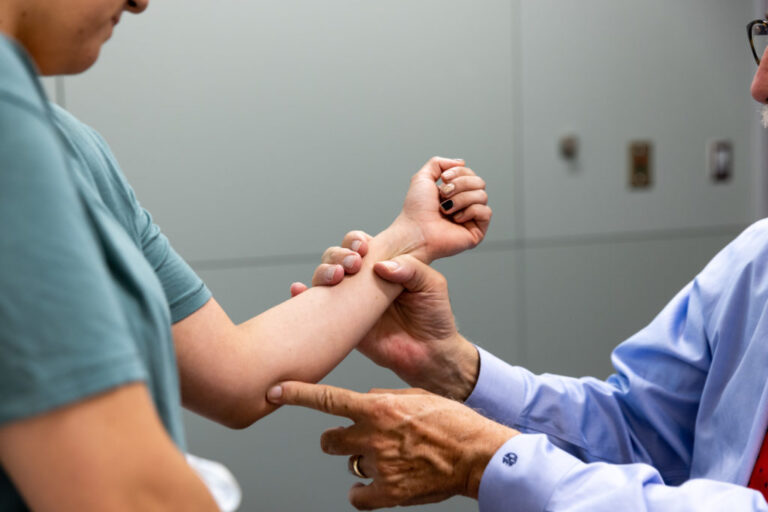Orthopedic injuries are common and affect millions of people around the world. They can be caused by a variety of factors, such as sports injuries, accidents, and overuse of muscles and joints. However, there are many myths and misconceptions surrounding orthopedic injuries that can lead to incorrect diagnoses, inappropriate treatment, and unnecessary pain and suffering. In this article, we will debunk some of the most common myths about orthopedic injuries and set the record straight.
MYTH #1: REST IS ALWAYS THE BEST TREATMENT FOR ORTHOPEDIC INJURIES
While it’s true that rest is an important part of the healing process for many orthopedic injuries, it’s not always the best treatment option. Rest alone may not be enough to treat certain injuries, such as fractures or ligament tears, and may even delay the healing process.
In some cases, active rehabilitation or physical therapy may be a more effective treatment option. These treatments can help promote healing, prevent muscle loss, and improve range of motion and strength.

MYTH #2: ICE IS THE ONLY TREATMENT NEEDED FOR ACUTE INJURIES
While applying ice to an acute injury can help reduce swelling and inflammation, it’s not the only treatment needed. Ice alone may not be enough to address the underlying issue and promote long-term healing.
In addition to ice, other treatment options may include rest, physical therapy, and medication. A medical professional can help determine the best treatment plan for your injury based on its severity and location.
MYTH #3: ONLY ATHLETES ARE AT RISK FOR ORTHOPEDIC INJURIES
While athletes are certainly at a higher risk for orthopedic injuries due to the physical demands of their sport, anyone can experience an orthopedic injury. In fact, many orthopedic injuries are caused by everyday activities such as gardening, lifting heavy objects, or slipping on a wet floor.
It’s important for everyone to be aware of the risks of orthopedic injuries and take steps to prevent them, such as maintaining good posture, staying active, and using proper lifting techniques.
MYTH #4: SURGERY IS ALWAYS NECESSARY FOR ORTHOPEDIC INJURIES
While surgery may be necessary for some orthopedic injuries, it’s not always the best or only option. In many cases, non-surgical treatments such as physical therapy, medication, and rest can effectively treat the injury and promote healing.
Surgery is typically reserved for severe or complex injuries that cannot be treated through other means. A medical professional can help determine the best course of treatment for your injury based on its severity and location.
MYTH #5: EXERCISE CAN MAKE ORTHOPEDIC INJURIES WORSE
While it’s true that certain types of exercise can exacerbate orthopedic injuries, regular exercise can actually help prevent and treat these injuries. Exercise can help strengthen muscles and joints, improve the range of motion, and prevent muscle loss.
However, it’s important to approach exercise with caution and follow a program that is tailored to your specific injury and fitness level. A physical therapist or another medical professional can help create an exercise plan that is safe and effective for your injury.

MYTH #6: ORTHOPEDIC INJURIES ONLY AFFECT OLDER ADULTS
While orthopedic injuries are more common among older adults, they can affect people of all ages. In fact, children and young adults are also at risk for orthopedic injuries due to sports or other physical activities.
It’s important for people of all ages to take steps to prevent orthopedic injuries, such as wearing protective gear when participating in sports, using proper lifting techniques, and staying active.
MYTH #7: PAIN IS ALWAYS A SIGN OF AN ORTHOPEDIC INJURY
While pain is a common symptom of orthopedic injuries, it’s not always present. Some injuries, such as stress fractures or ligament tears, may not cause immediate pain but can lead to long-term damage if left untreated. Additionally, pain can be a symptom of other conditions that may not be related to the musculoskeletal system, such as infections or nerve damage.
It’s important to seek medical attention if you experience any symptoms or discomfort, even if it’s not accompanied by pain. A medical professional can help determine the cause of your symptoms and provide appropriate treatment.
Discover the truth about common myths surrounding orthopedic injuries in this informative article. Learn how to identify the signs and symptoms of orthopedic injuries and seek appropriate medical treatment at Specialty Care Clinics by calling (469) 545-9983 to prevent long-term damage.
